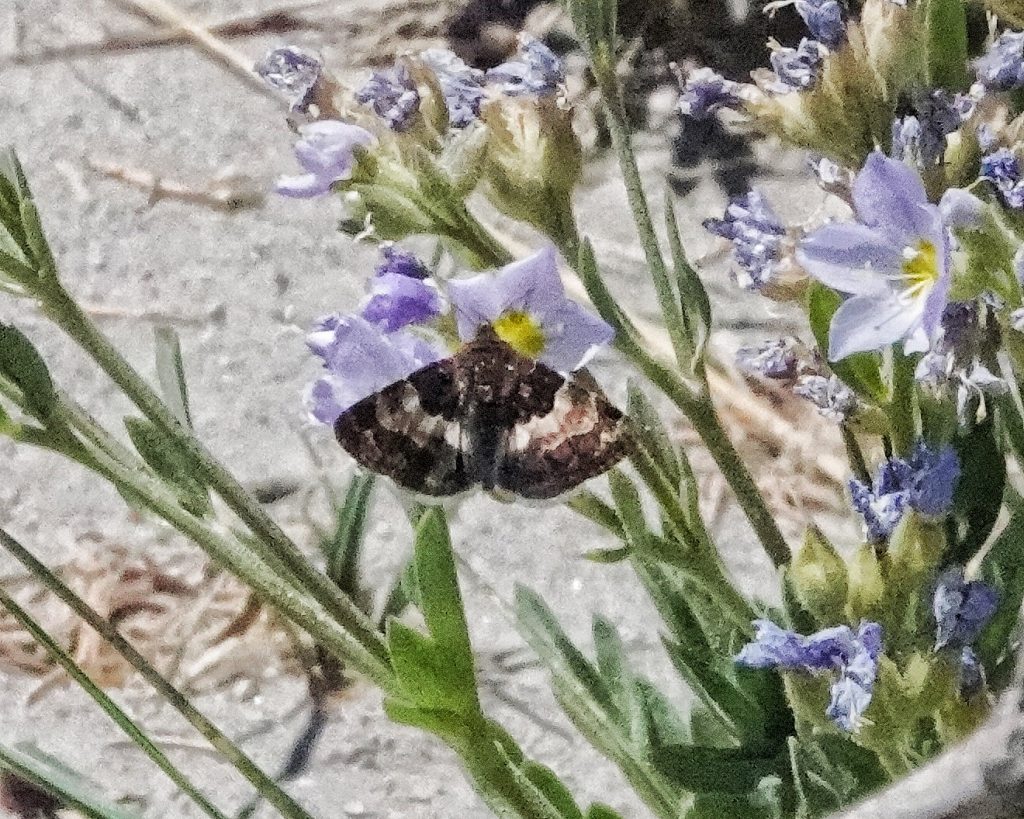
On both of my recent trips to Mt. Hood I saw a few dozen of these pretty little noctuid moths, mostly nectaring on sulphur buckwheat and other flowers, as well as several that were just perched on the ground. My first guess was that they were in the genus Schinia, and it didn’t take but a couple minutes on the Moth Photographers Group website to figure out they were likely S. vacciniae. Seems I was also kind of lucky to see them, and especially to see that many, because they are said to be rare and sporadic, although apparently Mt. Hood is a hotspot, because one of the two records for this species in Oregon on BugGuide is also from Hood.
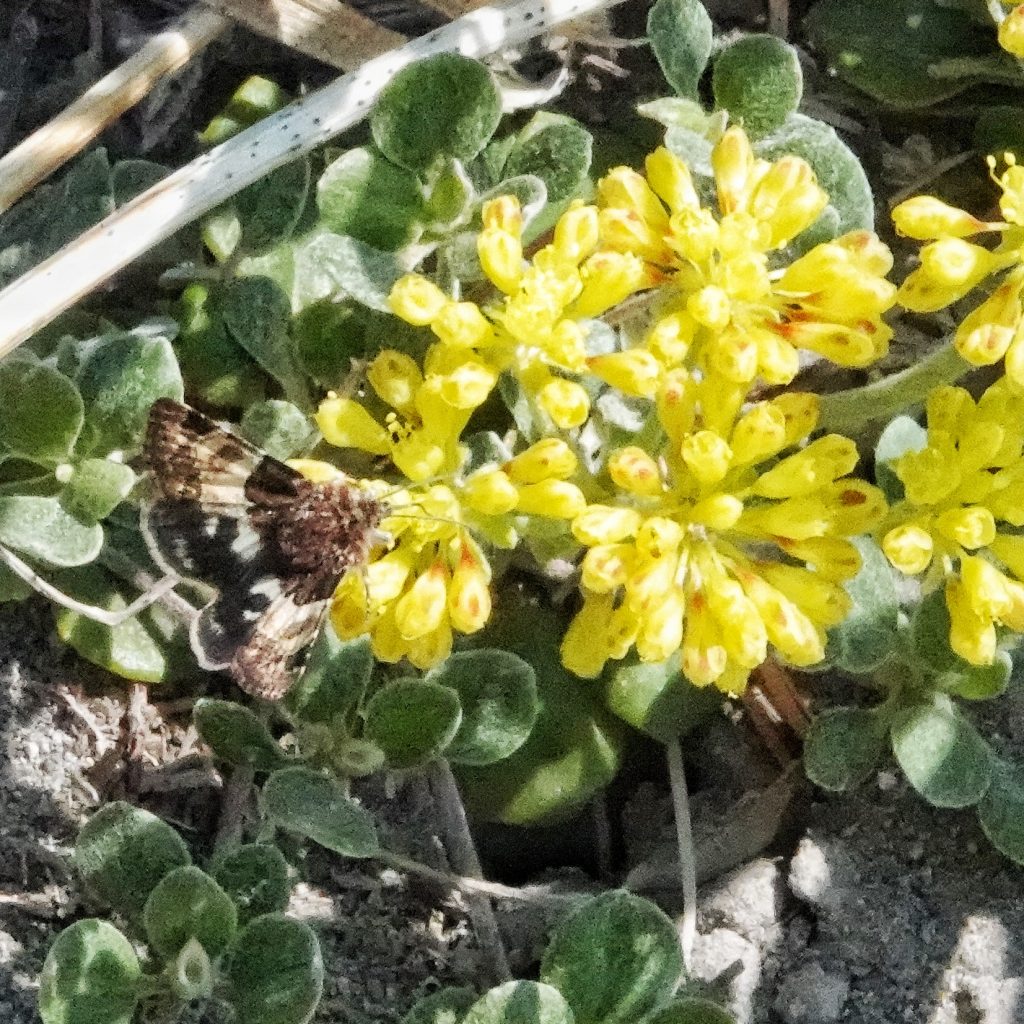
I was thrilled to finally positively identify one of these Schinia, because my previous attempts were stymied by the similarity of several species, as well as the fact that they are small, flighty, and it can be difficult to get really good photographs of them. I’d like to think that I’m finally getting slightly more proficient at stalking insects, but I’m probably just getting lucky more often, though it did take several dozen shots to get these 8 that are adequate.
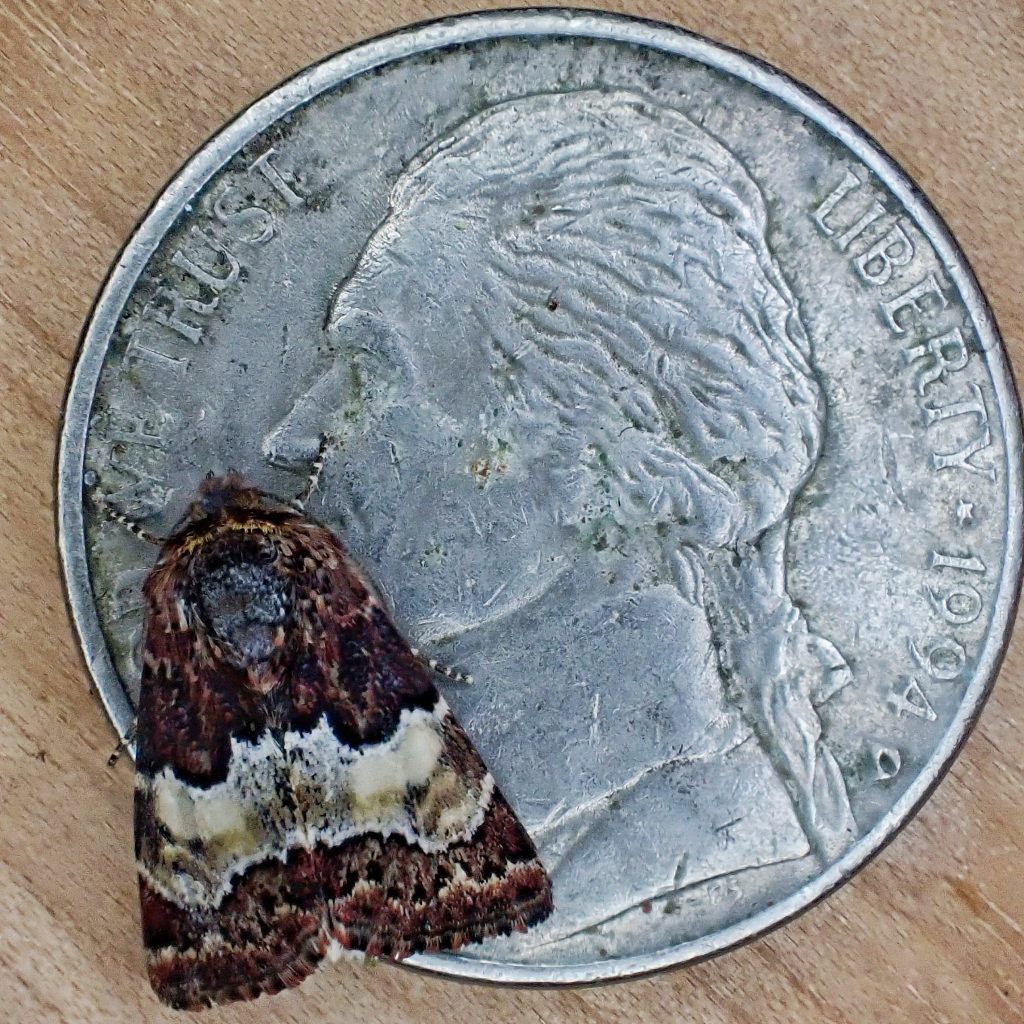
Description– Small (forewing length 9-10mm) mostly black moth with a cream colored median area that has a patch of burnt orange near the costa; hindwing with a large and a small patch of white.
Similar species– Schinia villosa has a darker median area and has dark, rather than burnt orange, patch near the costa.
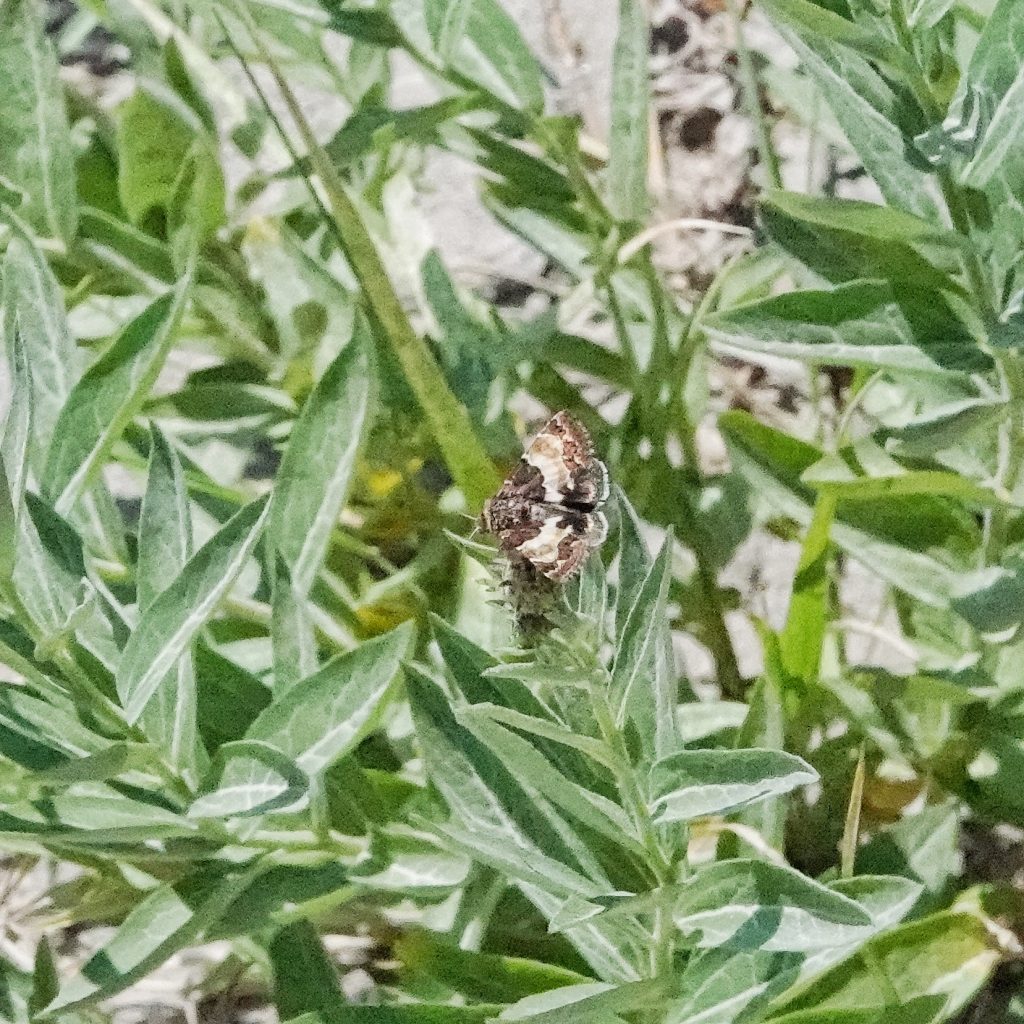
Habitat– “This species occurs in open mountain meadows at middle to high elevations. It is usually rare and sporadic in distribution.” PNW Moths; Schinia vacciniae
Range– Found from Washington to California and east to Idaho; in our region it is found primarily in the Cascades and Siskiyous, with a disjunct population in the foothills of the Rockies near Boise, Idaho.
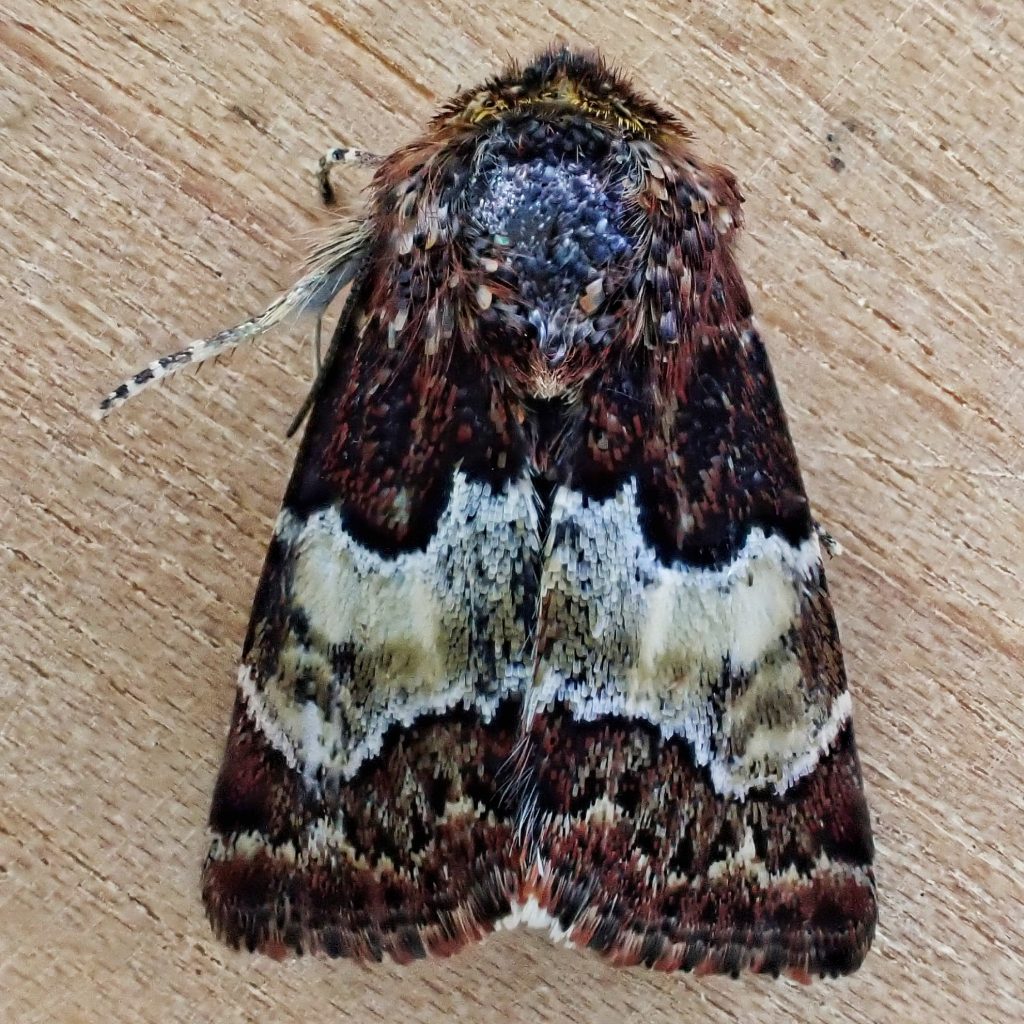
Eats– “No information is presently available regarding larval foodplants of this species. Hardwick (1996) notes an association of this moth with the flowers of Chrysothamnus and Haplopappus in the Asteraceae. It is associated with a purple Aster species in Idaho. Fleabanes (Erigeron spp.) in the Asteraceae are the suspected foodplant in the Cascades based on habitat association and closely related species.” PNW Moths | Schinia vacciniae; I found most of the dozens I saw nectaring at either Eriogonum umbellatum (Sulphur buckwheat), Calyptridium umbellatum (Mt. Hood pussypaws), or Polemonium (Jacob’s ladder).
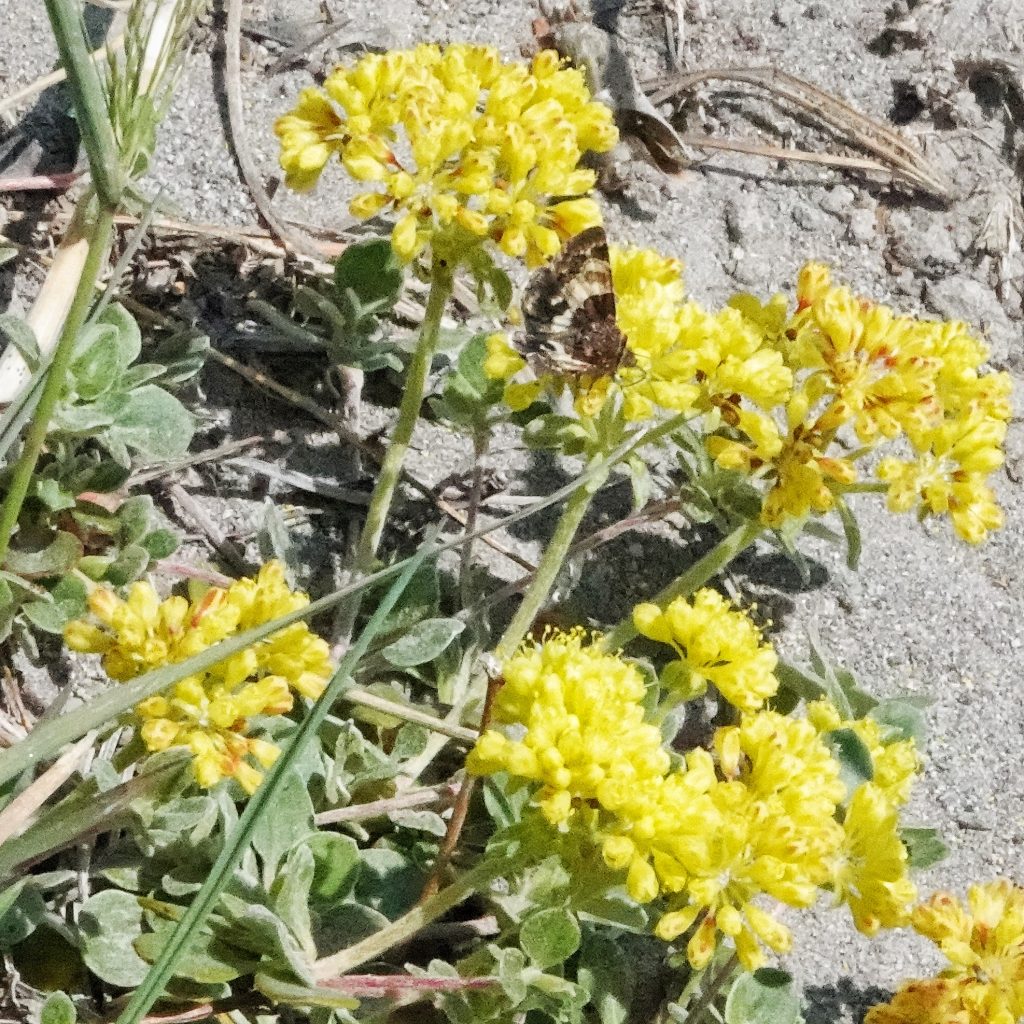
Eaten by– Presumably a host for parasitoids in Hymenoptera and Diptera, and probably preyed upon by insectivores of all classes, but I can find nothing specific for this species.
Adults active– Diurnal; Adults fly from July into September.
Life cycle– Apparently univoltine, but nothing seems to be known for sure
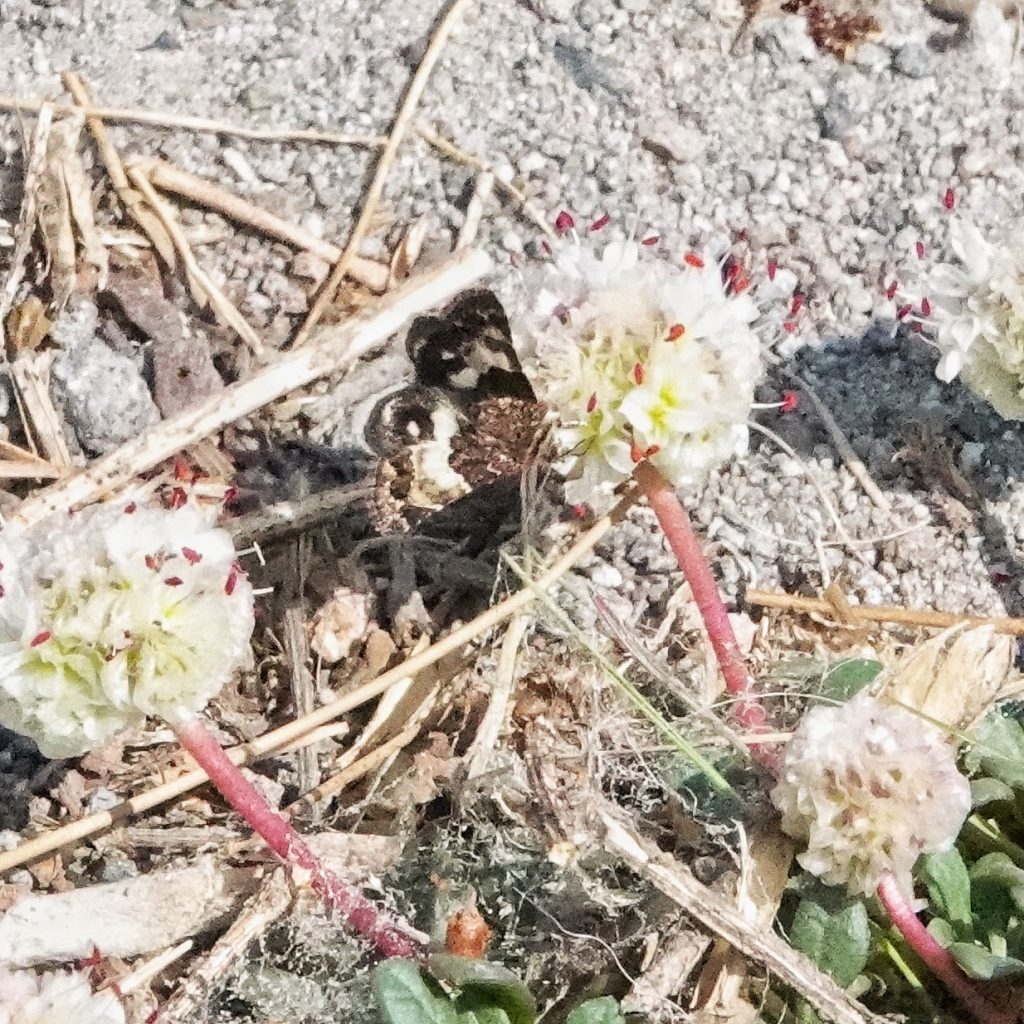
Etymology of names– Schinia is from the Greek for ‘a rush/an arrow’, and refers to the sharp spurs on the forelegs of members of this genus. The specific epithet vacciniae appears to be from the Latin word for whortleberry, and possibly the type specimen was collected from the related blueberries/huckleberries, but Hubner doesn’t deign to explain the reference.
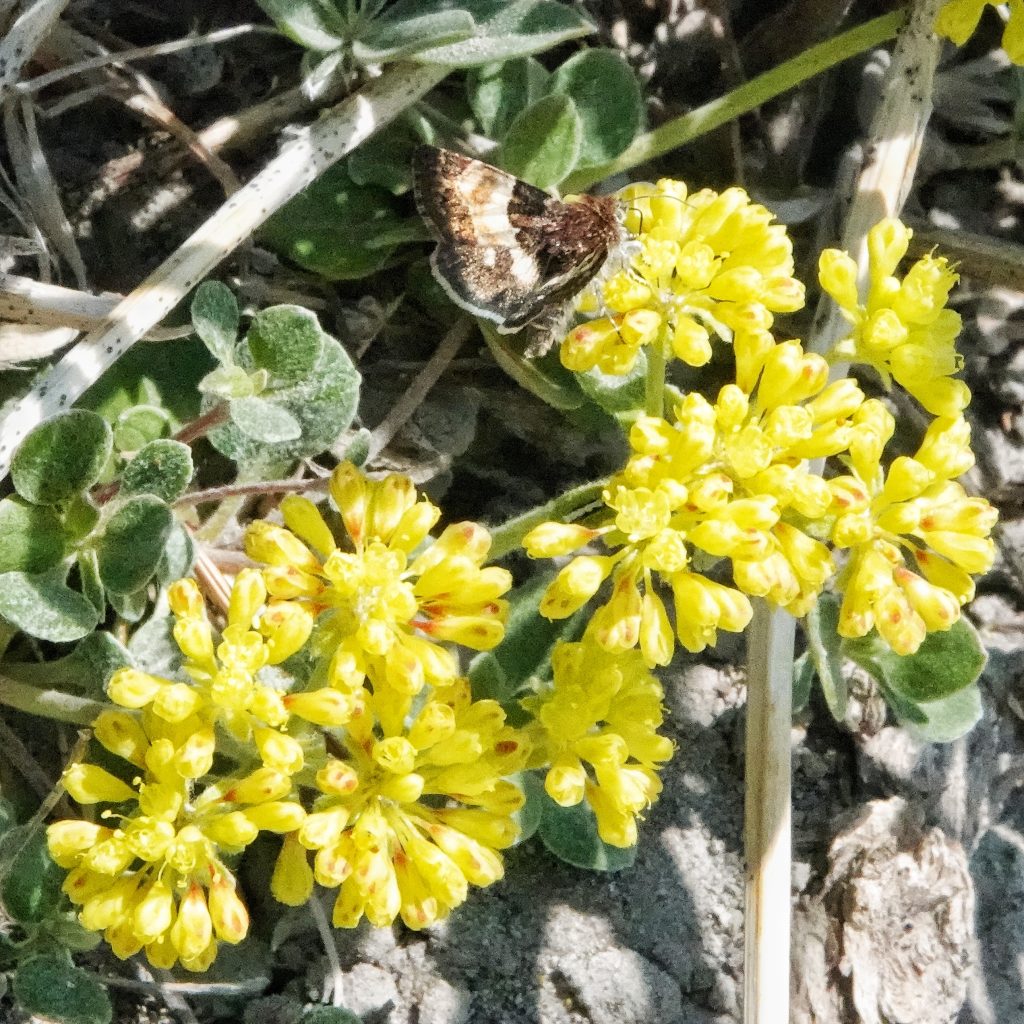
Species Schinia vacciniae – Hodges#11087 – BugGuide.Net
http://mothphotographersgroup.msstate.edu/species.php?hodges=11087
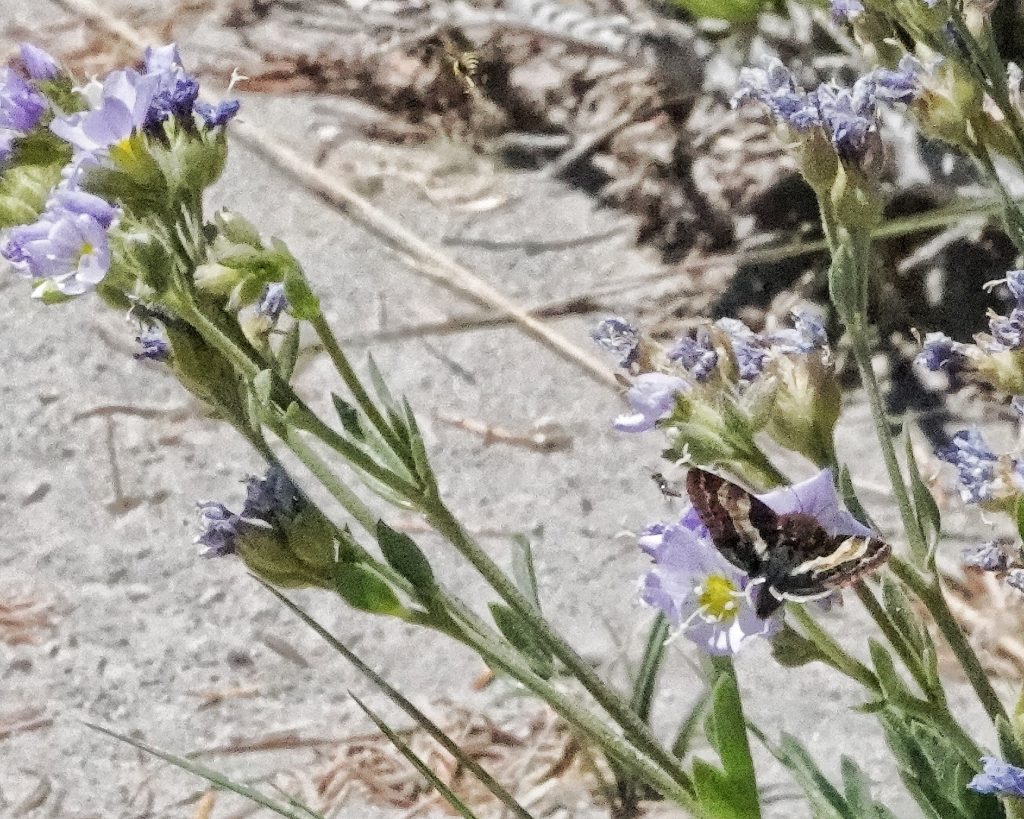
love these pictures! what a wonderful little moth!
Thanks, Amanda!